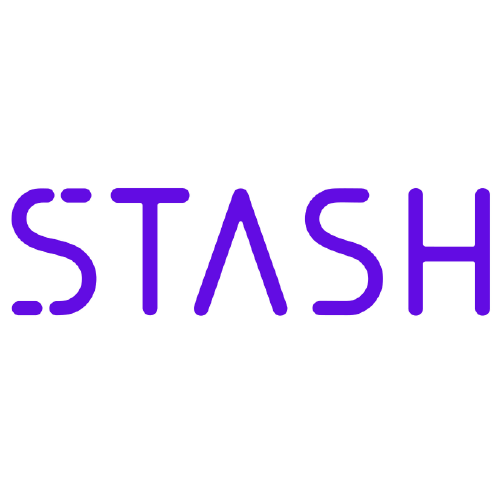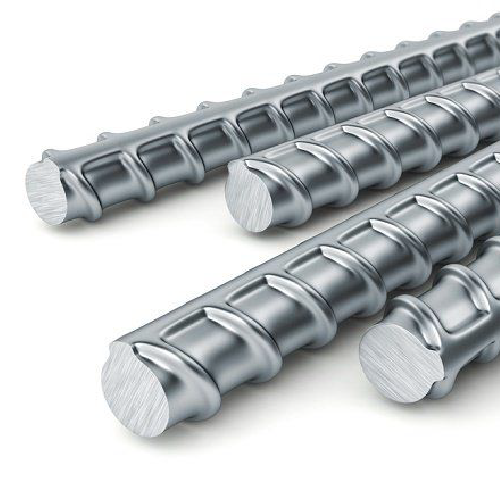
Stocks vs CFDs: The Key Differences
An investment opportunity that is becoming increasingly popular, however, is the use of CFDs (Contract For Difference).
Where purchasing stocks in a business means that you own that stock, a CFD simply matches the value of a stock or commodity without the element of ownership.
If you think a course in trading might benefit you, read The Best Stock Trading Courses.
Key Differences Between CFDs and Stocks
What Do You Own?
With CFDs, there is no element of ownership. What you have instead is a contract with a broker.
The advantage of ownership, in this context, is the related range of shareholder perks and benefits. For example, voting rights or the option to attend shareholder meetings.
Another benefit of stock ownership is the payment of dividends.
If you purchase CFDs concerning company shares, the likelihood is that you will be paid a dividend if you have a CFD in place at the time when dividends are released to shareholders.
However, the conditions surrounding that dividend, such as the amount paid out, will vary from the dividend arrangement for a stockholder.
Financing the Investment
However, a CFD investor has the opportunity to pay a percentage of the stock price and borrow the remaining amount from their broker.
This is known as leverage trading.
For example,
James and Michael each have £10,000 to invest. James uses his £10,000 to buy 19 Tesla shares priced at £502 each, leaving him with £462 unspent.
Michael is also interested in Tesla, but instead of using most of his money in a straightforward stock purchase, he arranges a CFD with a 10% margin.
He invests £954 and borrows the rest of the money from his broker. Michael then has £9,046 remaining to invest elsewhere.
To find out more about Leverage Trading, read What Is Leverage in Forex Trading?
What Can You Invest In?
By contrast, CFDs can be used for a whole host of trading instruments such as business shares, foreign exchange (forex), indices, cryptocurrency, commodities and bonds.
Speed of Cash Settlement
However, when you sell your CFD, or it comes to an end, you will be paid immediately. The benefit to an immediate cash settlement is the speed with which you can reinvest your money or take it as income.
Trading Hours
Stock exchanges are closed for trading on a weekend and for bank holidays.
If you invest in CFDs, however, which are open to a wider range of investment instruments (forex, commodities, etc.), you have access to many more markets.
Therefore, you can generally trade for twenty-four hours every day.
Length of Investment
CFDs can be used for short or long-term investments, but are especially suited to the short term because many of the investment instruments they trade-ins, such as cryptocurrency or forex, are subject to rapid rises and falls in price.
By comparison, stock trading is not suitable for short-term investments because it relies on a buy-and-hold strategy and restrictions linked to actual ownership of stocks which may prevent a quick sale.
The Best Trading Platforms
Let’s take a look at the best trading to earn more.
1. Liteforex
Best for: Learning from others
Liteforex is one of the most popular online reliable brokers over the world. Over the past 15 years, it has developed a strong reputation for beginners and experienced investors alike, has a minimum $100 deposit.
The Liteforex app aims to use easy for every clients. It is available on Google Play and the App Store and allows you to move seamlessly between devices.
It’s innovative features include:
- Pre-programmed one-click trading
- Copy Trader – Copy the trades of others in real-time
- Its own social networking platform
- Pre provided investment strategies which they call Copy Portfolios
The app boasts the ability to allow you to place online trades even if the trading platform is down.
The information is being presented without consideration of the investment objectives, risk tolerance, or financial circumstances of any specific investor and might not be suitable for all investors.
2. FXTM
The FXTM Platform itself is intuitive and easy to use, suitable for those just getting into trading and those more experienced alike.
It is designed to offer a full replication of an institutional trading environment including depth of market.
With advanced risk management and order functionality, this is a detailed platform for trading stocks.
The FXTM app offers a premium range of order types, with advanced technical analysis tools.
You can set up push and email notifications for the important things that you want to know in relation to your stock trading needs – such as price alerts and trade statistics.
Within the app, you can:
- Complete a range of order types
- Work with all your accounts in one app
- Understand detailed trade analysis
- Review detailed order tickets – base currency dollar value and pip distance
As a platform, there are comprehensive educational videos and explanations of symbols, so you can find optimized processing for expert advisors and indicators.
The information is being presented without consideration of the investment objectives, risk tolerance, or financial circumstances of any specific investor and might not be suitable for all investors.
3. FBS
Best for: CFDs
This app is designed for those wanting to trade outside of the US. It is considered one of the best for CFDs on shares and has a minimum $100 deposit.
There are low trading fees but considerable fees for inactive users.
The educational section is average, as are the research tools. However, the app is easy to use overall.
This app is recommended for those familiar with CFDs and who are actively trading. Reviews of the app show that users like the:
- Account-opening process
- Deposit and withdrawal features
- Customer service
- Actual trading platform
The information is being presented without consideration of the investment objectives, risk tolerance, or financial circumstances of any specific investor and might not be suitable for all investors.

Tax Liability
Stocks are an asset, while CFDs are simply an agreement because of the lack of ownership. Nevertheless, both carry a tax liability.
Stocks
- Capital gains tax
- Stamp duty
- Dividend tax, if appropriate
The calculation of the amount you pay, however, can be complicated by the rate of income tax you would normally pay.
As a basic rate income taxpayer, the amount you pay will depend on how much income you earn, your income tax allowance, and what profit you made from the sale of your stocks.
For example, Taxable income (income less personal income tax allowance) – £10,000.
Taxable gains (income from the sale of stocks with fewer expenses) – £15,000.
Deduct the capital gains tax-free allowance from your taxable gains – £2,700.
Add this to your taxable income – £12,700.
If the resulting amount is within the basic income tax band, £37,700 in 2021/22, 10% will be paid on your gains, and if it is above, you will pay 20%. In this instance, the amount is within the tax band, and the tax liability is, therefore, £127 (10%).
If you are a higher rate income taxpayer, you will pay 20% capital gains tax on your taxable gains.
Stamp duty generally comes into effect if you buy shares at a rate of 0.5%.
Should you receive dividend payments, these will be added to your income.
There is a dividend tax-free allowance of £2,000 (2021/22). Should your dividend earnings be more than £2,000, the percentage you are charged will depend on your income tax band:
- Basic tax band rate – 7.5%
- Higher tax band rate – 32.5%
- Additional tax band rate – 38.1%
CFDs
CFDs are subject to capital gains tax and, where appropriate, dividend tax.
Taxation Example One:
Once the capital gains tax-free allowance has been deducted from her taxable gains, the remaining amount is £6,700. When added to her taxable income, this results in an amount of £13,700.
As this amount is within the basic income tax band, 10% is applied. Her capital gains tax liability is £137. Her normal tax rate will also be applied to her taxable income.
There is no tax liability on her dividend payments because they are within the dividend tax allowance.
Taxation Example Two:
The amount of her CFD earnings is lower than the capital gains tax-free allowance and results in zero capital gains tax liability. However, her normal tax rate is applied to her taxable income.
Which Is the Best for You?
Factors to consider include:
- Do you actively want to own shares in a business and enjoy the privileges that bring, such as voting powers and dividend payments? In which case, investing in stocks is the path for you.
- Are you more, or at least equally interested in being involved with a particular business over making a profit? If yes, then stock trading is your best choice.
- CFDs are your best bet if you want to invest in instruments not available to stock traders, such as commodities or cryptocurrency.
- Do you want to make a short-term investment, selling after a couple of days? Again, CFDs are your best choice.
- How much money do you have to invest? Using leverage trading, CFDs may give you access to the same opportunities as buying stock but for a smaller initial outlay of money.
- Do you want to trade at any time, or are you happy to trade within stock exchange trading hours only?
CFDs vs Stocks: Advantages and Disadvantages
CFDs
- The option to use leverage investing so you can spread your investment pot
- Can be used for both short and long-term investments
- Opens up a wider range of investment instruments than stock trading
- Higher risk of losing money
- Leverage investment is complicated and can prove difficult for a beginner
Stocks
- The benefits that accompany stock ownership
- You own the stocks
- The chance to be involved with a particular company or trend
- Only able to trade when the stock markets are open
- Not suitable for short term investment
Final Thoughts
Entering the forex market requires a steep learning curve that can be daunting. Most of this information is, however, available online and for free.
Some brokers and providers will charge for the curation and delivery of their course content. These courses may be a great time saver but, if you don’t wish to invest early on, similar information can be found through targeted research.
Whether or not you intend to invest money into your forex education, you must invest your time.
Before beginning to trade with your money, it is prudent to gain enough background knowledge to be able to speak confidently about technical aspects such as spreads, ratios and forex charts.
It is also crucial to take the time to gain practical experience in a safe environment, through practising with a demo account before setting up a live forex account.
A solid forex education will ensure you begin your trading career – whether it is amateur or professional – with knowledge of the tools and skills needed for the best possible chance at success.
Myanfx-edu does not provide tax, investment or financial services and advice. The information is being presented without consideration of the investment objectives, risk tolerance, or financial circumstances of any specific investor and might not be suitable for all investors.
Financial Trading is not suitable for all investors & involved Risky. If you through with this link and trade we may earn some commission.
The euro continues to trade in a downward correction within the short-term uptrend. Currently, the price is testing the trend boundary 1.1369
Gold continued to trade in a short-term downtrend yesterday and reached the lower Target Zone 3274 – 3252. However, bulls managed
Oil has declined in a correction within the short-term uptrend. As a result, the price has reached the support (A) 61.68
Weekly US Dollar Fundamental Forecast Have the markets gained influence over Donald Trump? The US President’s displeasure with the S&P
The euro continues to trade in a short-term downtrend. Market participants tested the trend’s key resistance of 1.1051 – 1.1035 yesterday. The
Gold’s short-term downtrend continued yesterday, reaching all sell targets from resistance (А) 3048 – 3041. The lower Target Zone 2957
Yesterday, oil prices corrected up to the key resistance area of the short-term downtrend, at 63.03 – 62.64. As sellers held that
Weekly US Dollar Fundamental Forecast A spark will ignite a flame. Such a spark was a social media hoax that
The euro remained in a short-term uptrend yesterday, and the Gold Zone 1.1017 – 1.1006 was broken out. The price then reached the
Gold corrected downward yesterday, to the support area (B) 3062 – 3052. The zone wasn’t broken out, and the asset started
Want to Trade Online?
Easy Trading Platform
Copy Experienced Traders
Trade from Your Pocket
Trade with Liteforex
- Best Mobile App
- Free Trading Courses
- Low Fees
- Fast Execution
- 24/7 Customer Support
CFD Trading on financial markets carries risks. Before deciding to trade, you need to ensure that you understand the risks involved.



















